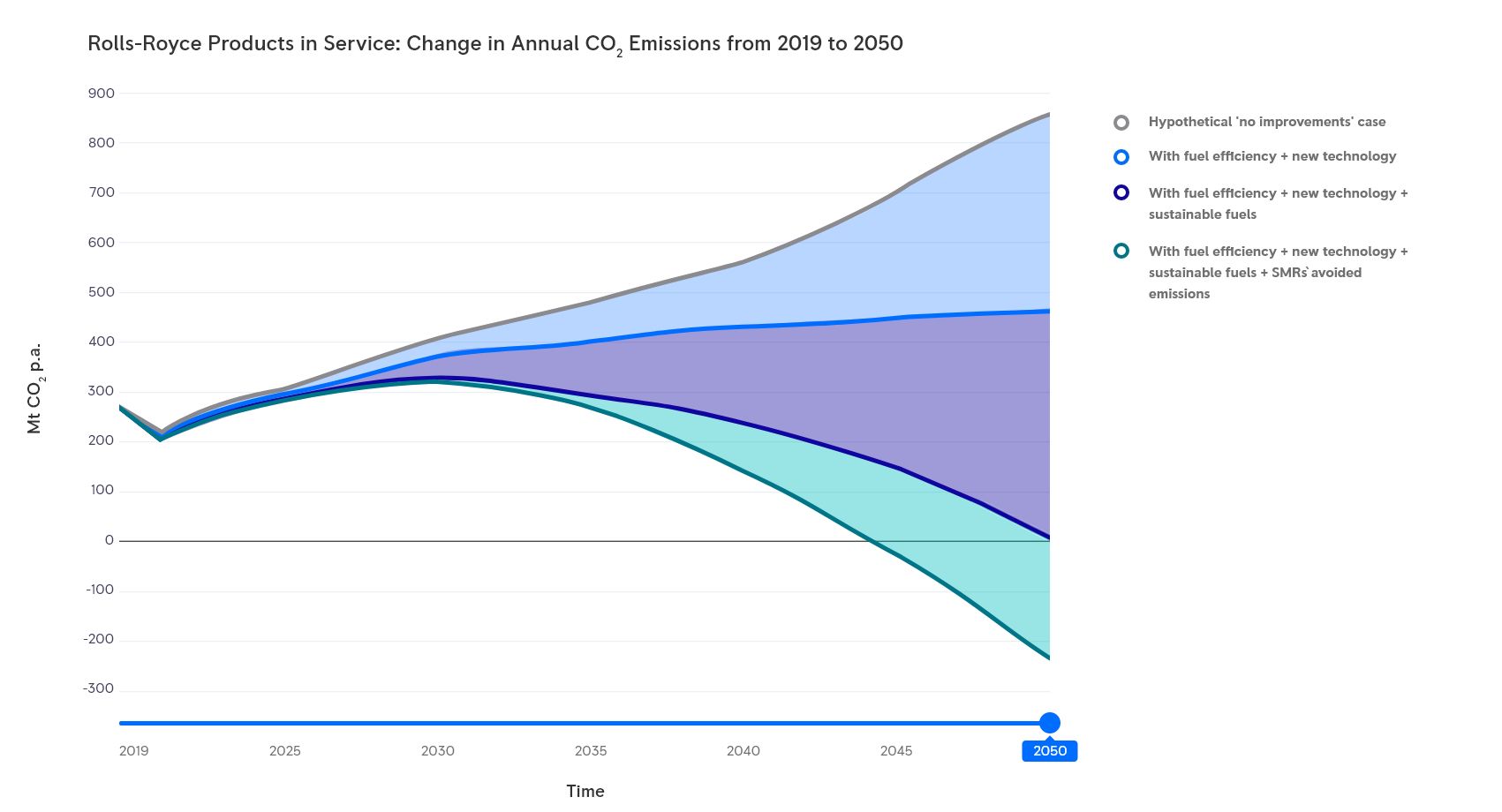The pathways above are based on our understanding of the technological solutions available to us today and our current understanding of the potential future market application for those technologies.
To achieve net zero carbon emissions, we must ensure that our fleet is compatible with net zero carbon operation by 2050, at the latest. This will be achieved through further advancing the efficiency of our engine portfolio through next-generation technologies and introducing new low or zero-emission products, including fuel cells, microgrids, hybrid-electric and all-electric technologies. These new technologies represent a significant commercial opportunity. By 2030 all new products will be compatible with net zero operation.
Beyond that, the scale-up of sustainable fuels will play a crucial role in reaching net zero carbon. To accelerate this, we will make all the commercial aero engines we produce, and our most popular reciprocating engines, fully compatible with sustainable fuels by 2023 and work with our armed forces customers to achieve the same goal for the Rolls-Royce engines they use.
As we pivot to become a net zero carbon business, we will enter new markets and sectors where we can offer technological solutions that will abate emissions outside of our current emissions footprint. This will help further drive our future innovation and growth. These technologies are depicted as additional compensation actions (in the chart below) as they do not abate emissions within Rolls-Royce’s current Scope 3 footprint but instead support the decarbonisation of other sectors. Our strategy includes the development and deployment of small modular nuclear reactors (SMRs) which will play a vital role in supporting the decarbonisation of the energy grid and meeting increased demand for clean electricity.

Technology assumptions:
These pathways are based on our best understanding of the technological solutions available to us today and our current understanding of the potential future market application for those technologies.
We have calculated our GHG emissions footprint in accordance with the WRI/WBCSD GHG Protocol Scope 3 Standard (2011). Scope 3 emissions accounting includes estimates and assumptions, in this instance these assumptions include the life cycle CO₂ saving of sustainable fuels will reach 100% by 2050, from approaching 70% today.
In this chart, we have depicted future business growth opportunities in new low, or net zero, technologies that serve markets in which we are not currently present (e.g. SMRs for large-scale power generation). They are therefore depicted as additional compensation actions as they do not abate emissions within Rolls-Royce’s current Scope 3 footprint but instead support the decarbonisation of other sectors.
NOTES: The hypothetical ‘no improvements’ line depicted indicates a potential emissions growth through increased demand for power – in reality, we know this emissions growth will never be realised as we continue to improve engine efficiency. The avoided emissions line takes account of 100% share of the expected energy output from SMR’s built by consortium and under licence. This chart assumes that the electricity produced by SMRs is used to decarbonise activities not currently carried out by Rolls-Royce products, including large-scale fossil-based power generation, and/or other sectors such as road transport, space heating etc which are currently largely based on fossil fuel consumption but are amenable to electrification. In this chart, we have assumed that each kWh of electricity produced by SMRs avoids 400 grams of CO₂ being emitted. The actual amount will depend on the particular combustion activity that is being displaced and could be greater or less than this assumed figure. In the event that some output from the anticipated SMR fleet is used to manufacture sustainable fuels specifically for use by Rolls-Royce products, the lower line would need to be adjusted upwards to avoid double counting with the reductions shown for sustainable fuels.